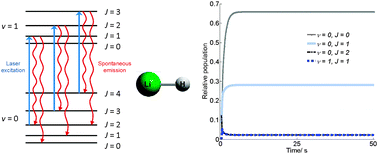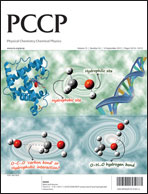Blackbody-mediated rotational laser cooling schemes in MgH+, DCl+, HCl+, LiH and CsH
Abstract
Ensembles of ultra-cold atoms, molecules and ions (both atomic and molecular) can be held in traps for increasingly long periods of time. While these trapped species remain translationally cold, for molecules the absorption of ambient black-body radiation can result in rapid thermalisation of the rotational (and vibrational) degrees of freedom. At 300 K, internal state purity is lost typically on the order of tens of seconds, inhibiting the study of quantum state selected reactions. In this paper a theoretical model is used to investigate laser-driven, blackbody-mediated, rotational cooling schemes for several 1Σ and 2Π diatomic species. The rotational cooling is particularly effective for DCl+ and HCl+, for which 92% and >99% (respectively) of the population can be driven into the rovibrational ground state. For the other systems a broadband optical pumping source (simultaneously exciting up to four transitions) is found to enhance the population that can be accumulated in the rovibrational ground state by up to 29% over that achieved when exciting a single transition. The influence of the rotational constant, dipole moments and electronic state of the diatomics on the rotational cooling achievable is also considered. An extension to polyatomic species is discussed and a combination of cold trap environments (at 77 K) and optical pumping schemes is proposed.


 Please wait while we load your content...
Please wait while we load your content...